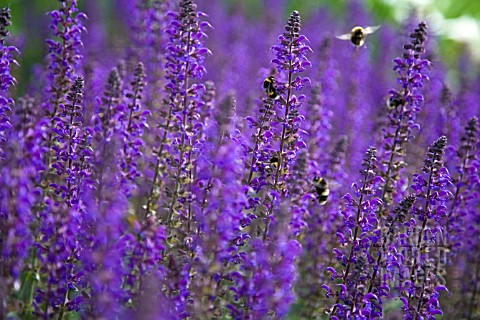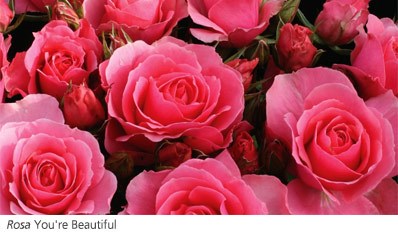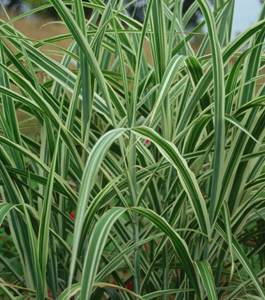Classical Chinese gardens and fountains are more than collections of beautiful plants, trees and water. They are representations of nature, providing insight into the philosophical and spiritual mind of past Chinese artisans and high-ranking citizens.
The principles of classical Chinese gardening can be useful and insightful to garden lovers living anywhere in the world. Chinese design objectives can inspire American home gardeners to try something new such as a garden fountain and encourage the expression of culture and philosophy through gardening.
In the 2,000 years since the imperial family first set aside natural areas for hunting, traditional gardens in China have developed into an art form equal in rank to painting, calligraphy and poetry. Several of the finest gardens, built during the Ming and Qing Dynasties (1368-1912), have survived the ravages of time and politics.
Classical Chinese gardens and fountains are more than collections of beautiful plants, trees and water. They are representations of nature, providing insight into the philosophical and spiritual mind of past Chinese artisans and high-ranking citizens.
The principles of classical Chinese gardening can be useful and insightful to garden lovers living anywhere in the world. Chinese design objectives can inspire American home gardeners to try something new such as a garden fountain and encourage the expression of culture and philosophy through gardening.
In the 2,000 years since the imperial family first set aside natural areas for hunting, traditional gardens in China have developed into an art form equal in rank to painting, calligraphy and poetry. Several of the finest gardens, built during the Ming and Qing Dynasties (1368-1912), have survived the ravages of time and politics.
Suzhou, about 50 miles west of Shanghai, is known as "the city of gardens." For generations, rich officials, merchants, landowners, scholars, garden designers and garden crafters settled in Suzhou to enhance its fame. The principles of classical Chinese gardens were well represented in their gardens. Visitors come to learn their secrets and experience their magic.
These gardens provide insight into the traditional Chinese view of nature, which includes the role human's play in the natural order. The gardens hold clues to the ancient Chinese mind through the winding paths, the use of symbolism and the selection of plants. In the traditional Chinese view of nature, humans were equals with everything in the natural world. As the philosopher, Lao Tsu wrote in the Tao Te Ching, "Man follows the earth. Earth follows heaven. Heaven follows the Tao. Tao follows what is natural." Traditionally, Chinese people assisted in the expression of nature but did not impose their will upon it.

Chinese gardens were originally designed to symbolize a living entity: rocks formed the skeleton, water and fountains functioned as the blood while plants provided the clothing. To portray the influence of human beings on nature, architectural constructions (bridges, pavilions, halls, courtyards, gateways, windows, doors and pavings) were integrated into a garden's design. Their purpose was to illustrate the ideal interaction of humans with nature. Together, these elements made up all that is natural on Earth: vegetation, mountains, and bodies of water with gently flowing Chinese fountains as well as human influence. The way they were integrated into the garden expressed the relationships they have in nature.
Gardeners in the West may be unable to mimic the grandeur with which the ancient Chinese gardeners represented nature, but they can include parts of each element. The goal is to create a sense of wholeness within the limitations of the site and to consider all these elements as integral parts of the garden.
Just as a garden's main elements are symbolic of the parts of a living whole, symbols that make up the culture's beliefs are scattered throughout Chinese gardens and integrated into their design. For example, bad spirits were believed to travel in straight lines so pathways were seldom designed straight or flat. It was believed that the many changes in levels and directions made it difficult for these spirits to infect the people enjoying the garden. Dragons, symbols of strength, change and goodness, frequently adorn Chinese fountain walls and roofs of garden structures.

Suitability -- The most appropriate location for every feature of a garden must be found. Seasonal changes in weather and plants, as well as the physical requirements of the garden site are considered. In addition to finding the most suitable site for each garden element (plants, rocks, water fountains and architectural constructions), details such as the size, shape, color and placement of railings, windows and doors in a building, for example, are also considered to ensure complete harmony of the surroundings.
Taking Advantage - The Chinese garden designer attempts to use the garden's surroundings, whether near or distant, to the best advantage. Sights, sounds, movement and stillness, the subtle and the obvious, are used as part of the scenes created within the garden. Many of the private gardens in China were small in size -- no larger than the typical garden sites of single family homes in the United States. It is the challenge, then, of the garden designer to create the illusion of spaciousness by incorporating far-off sights and sounds into the garden's ambiance.
Refinement - To define what is refined in the garden design is a judgment rooted in culture. In Chinese gardens, this refinement has meant incorporating a tranquility, gracefulness, elegance, neatness and distinctness that is in accordance with nature. The expression of these characteristics is judged in China against culturally accepted historical standards. Outside of China, gardeners can define what is considered refined according to their own standards.
Simplicity - To Ji Cheng, being simple means not being extravagant. Resources that are on site or nearby are considered the best materials to use in designing the garden. Rare or unusual objects and plants are considered extravagant.
Changeability - This objective is prominent in traditional Chinese gardens because it expresses the natural law of constant change. A garden design can create a sense of change and unexpectedness with scene changes in every turn of a path, an unexpected or different view from each window and aesthetic changes with each season. Designs can include changes caused by clouds, sun, wind, rain, snow, insects, birds, plants and water.
A garden's plants provide a link among all its elements, symbolizing harmony in nature. Plants are the garden's dynamic, living component.
In accordance with the Chinese view of gardens as representations of nature, the trees, shrubs and flowers of a garden are chosen to reflect the unique features of the garden's region. Most traditional Chinese gardeners select native plants, or plants with special meaning in Chinese culture. Bamboo, for example, is common in Chinese gardens because of the many lessons it teaches. Bamboo is strong and resilient. Staying green throughout the winter, it teaches that one can flourish despite harsh conditions. Bamboo grows in clumps, modeling life in the family. Its fast growth illustrates self-development.
The plants are situated in ways that show off an individual plant's unique features. Their arrangements in the design demonstrate their interrelationships with other species as they occur in their natural habitats. The purpose of plants in Chinese gardens is to reflect the inherent order of nature. More than a collection of plants or even an expression of beauty in the purely visual sense, the classical Chinese garden is a physical representation of Chinese philosophy and culture. These gardens embody the best of traditional Chinese thought and culture, which sees humanity functioning as part of a greater natural order.
Today, home gardeners can apply their plant growing talents in the spirit of these old Chinese gardens by expressing their own culture and philosophy toward nature in their garden designs and by applying Ji Cheng's design objectives. The result will be a garden that unites aesthetics, plant cultivation, philosophy and culture.
Kristina L. is resource for the website Serenityhealth.com, your one stop shop for any type of water fountains and water fountain information. You will find many outdoor fountains for your garden, wall fountains, tabletop fountains and even custom fountains. Visit Serenityhealth.com or call to talk to one of our water fountain experts.
Article Source: http://EzineArticles.com/?expert=Kristina_L



.jpg)







